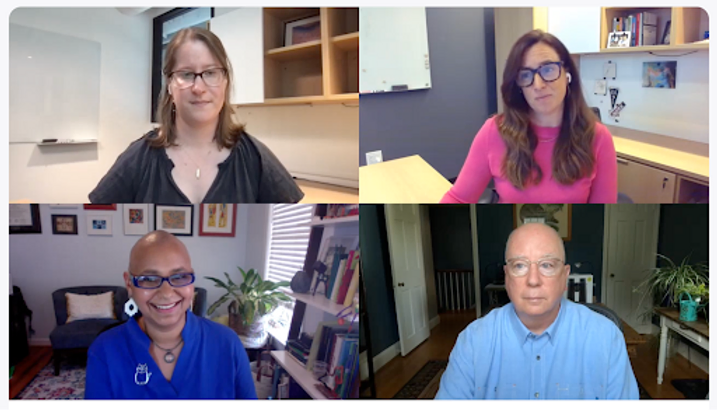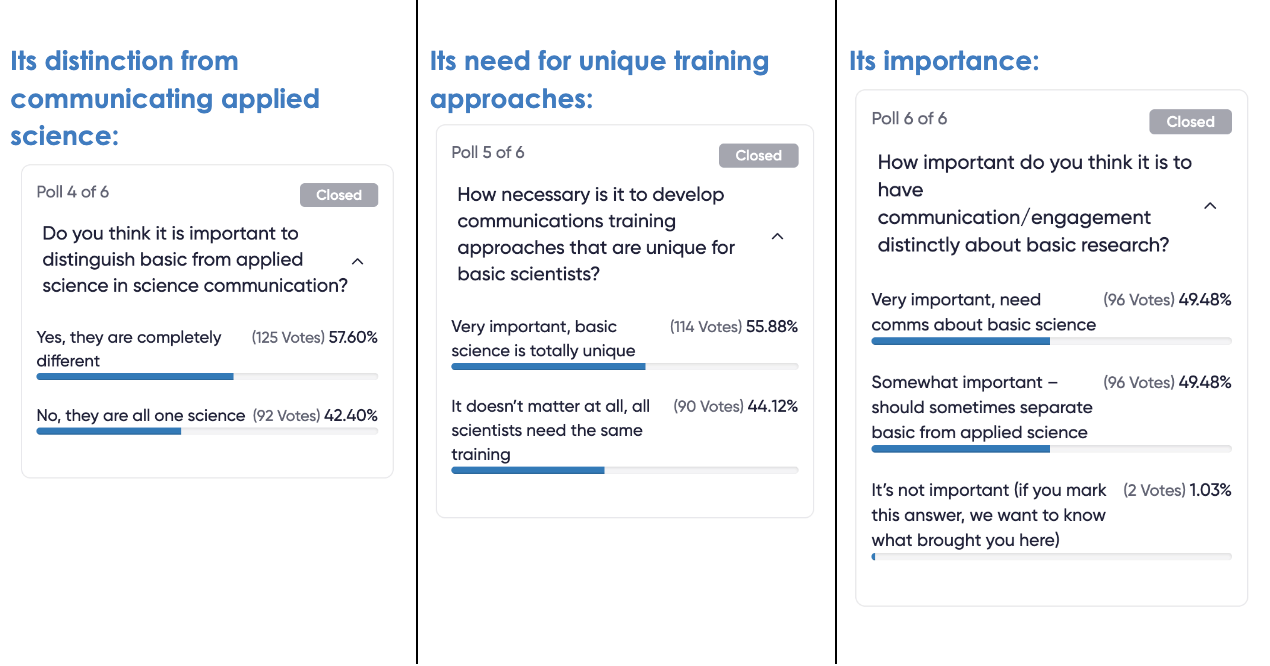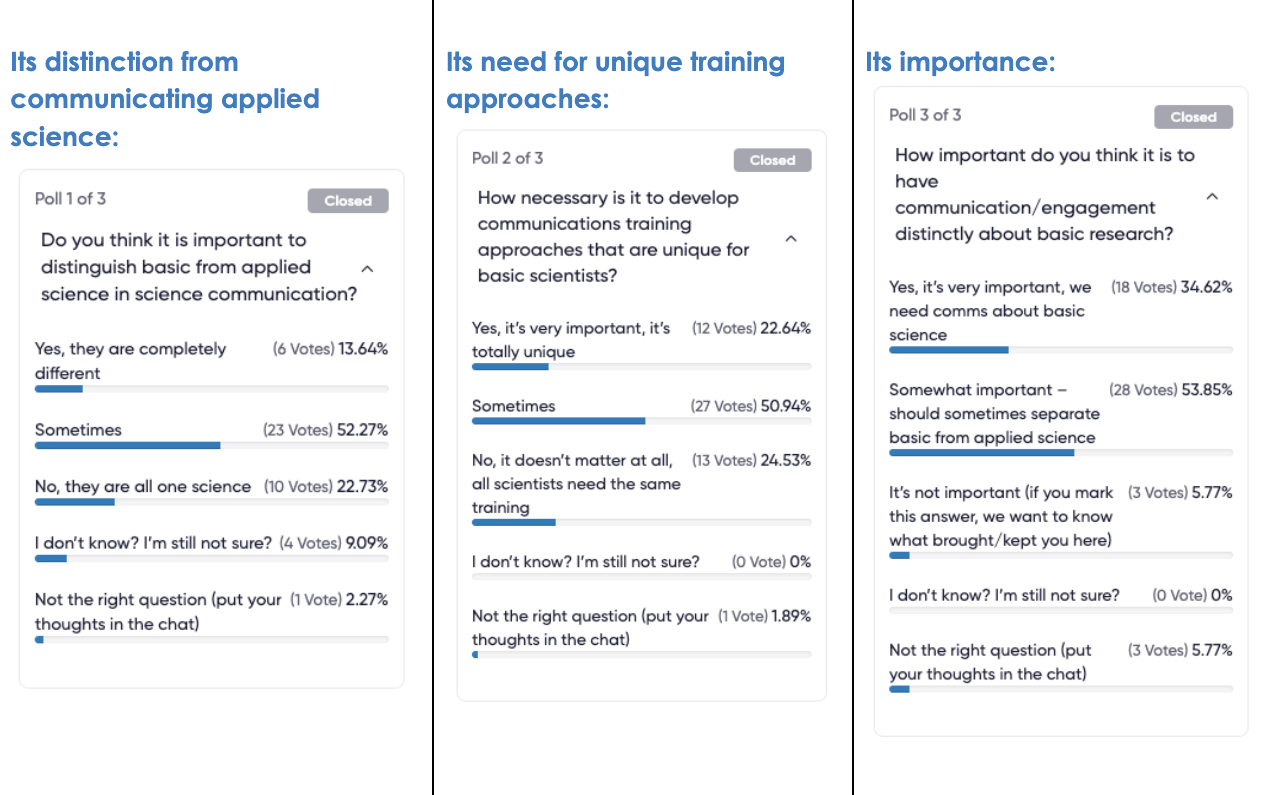SciPEP 2023: New Insights for Communicating Basic Science – Executive Summary
SciCommBites X SciPEP collaboration: SciCommBites was invited to cover SciPEP 2023 and was there every step of the way to bring you the newest research and practice on communicating basic science. This SciCommBites summary is the first of a series of three posts covering the two-day conference presentations and discussions.
Supported by a partnership between The Kavli Foundation and The Department of Energy (DOE) Office of Science, the Science Public Engagement Partnership (SciPEP) held its second virtual conference on July 25 and 26, 2023. This conference, New Insights for Communicating Basic Science, comes two years after the first SciPEP conference, Communicating the Future: Engaging the Public in Basic Science, which was held also virtually in July 2021.

Communicating Basic Science: Champion, Catalyze, Connect
SciPEP 2023 opened with welcoming notes by the leadership team (Figure 1): Rick Borchelt, the Special Assistant to the Director at DOE Office of Science; Brooke Smith, the Director of Science and Society at The Kavli Foundation; Keegan Sawyer, the Project Manager of Science of Science Communication at the DOE Office of Science (on contract); and Lauren Budenholzer, the Science and Society Specialist at The Kavli Foundation.
In their opening remarks the leadership team reflected on the first SciPEP conference, emphasizing that there is significant public support for funding basic science, but there is very little research on communicating basic science or on the public’s perception of basic science.
Following the publication of a prospectus from the first conference, the leadership team heard differing views about whether communicating basic science is actually different from communicating applied science. They noted that current science communication scholarship focuses on how to make science relevant to the audience, which usually means focusing on the utility of the research. But basic science is not driven by utility.
In response, the leadership team asked: whether, how and when approaches for communicating basic science differ from approaches for communicating applied science? To address this question, SciPEP 2023 brings together science communication researchers, practitioners, and partners interested in advancing our understanding of communicating basic science in relation to three distinct, yet interrelated, topics of study:
- Science communication by basic scientists,
- Science communication about basic research,
- Public interest in engagement with basic science or scientists.
As a pulse check to understand how those attending SciPEP 2023 view those topics, the leadership team polled participants on three aspects of communicating basic science (Figure 2). In this benchmark poll, ~58% of respondents thought it is “important to distinguish basic from applied science communication” and ~56% thought it is “necessary to develop communication training that is unique for basic scientists.” Almost all respondents thought it is “very important” (~50%) or “somewhat important” (~50%) to have communication/engagement distinctly about basic research.

The remainder of the opening session outlined SciPEP 2023’s two-day conference focusing on two broad themes:
- Day 1 focused on sharing information and ideas (about “basic” scientists, publics, the nature of basic science, etc.), mainly exploring whether basic science communication requires unique strategies and tactics.
- Day 2 focused on taking action (research directions, tools for training, community conversations, funding, partnerships, etc.) based on information from Day 1.
[SciCommBites will be publishing summaries of the main session events over the next few weeks.]
Take Homes and Future Directions
The conference leadership team returned to the closing session to reflect on the conference presentations and discussions. For instance, the team learned that conference participants held a spectrum of views about whether communicating basic science is different from communicating applied science. The leadership team listened to feedback from conference attendees that distinguishing basic from applied science communication is context-dependent and that intermediate options need to be considered when asking questions about the two. The team incorporated this feedback into the closing polls (on Day 2), which included middle ground options for all questions (Figure 3).
In the closing polls, respondents primarily selected that it’s “sometimes” important to distinguish basic from applied science communication (52%), for basic scientists to receive unique communications training (51%), and for distinct communication/engagement about basic research (54%). It is worth re-emphasizing here that the leadership team did not intend for those polls to serve as a rigorous data collection tool, but rather as a pulse check of the conference attendees to help guide conversations throughout the conference.

Continuing their reflections on the content of the conference sessions, the leadership team reflected on their conclusions from Day 1 sessions that the public does not distinguish between basic and applied science. They also concluded from Day 2 that while articulating basic science communication research themes is relatively easy, articulating very specific research questions is quite difficult. And while many of the same principles of science communication can be brought from the applied realm to the basic, more nuanced principles and specific examples about basic science would be useful for the science communication community.
Lastly, the leadership team considered meta questions and future directions, such as: who sets the science communications research agenda, how can the community better access communications research, and how can better partnerships be built between communications researchers and practitioners?
[To learn more about the conference sessions, look for the summaries that SciCommBites will be publishing over the next few weeks.]
Conference Sessions at a Glance
The conference was a demonstration of accessibility; it was free of charge, had no overlapping sessions, and all the main sessions spanned over only 4 hours each day. All sessions had live captioning and recordings were made available to conference registrants almost immediately after each session. Recordings will be available to the general public on YouTube.
An overview of the main sessions, presenters, and attendees are summarized in the table below:
Day 1:
- 4 Main Sessions
- Communicating Basic Science: Champion, Catalyze, Connect
- Perceptions and Preferences: What does (the) public want?
- Identity and Inspiration: What do we know about “basic” scientists?
- Relevance or Connection?
- 17 presenters and moderators from 14 institutions
- 460 Attendees
Day 2:
- 4 Main Sessions
- Charting a Pathway from Insights to Action
- SciComm Training: What do we need?
- A SciComm Research Agenda: What do we include?
- Opportunities and Priorities: Of the community, for the community, and by the community
- 22 presenters and moderators from 13 institutions
- 294 Attendees
Links and Resources:
- Accelevents platform open for conference registrants until August 26, 2023 to access recordings, chats, resources, etc.
- Recordings will be available on the SciPEP YouTube channel in September, 2023.
- Reports supported by Kavli are being made available on the SciPEP website
- Miro board from Day 2 (open until August 26, 2023)
- Post-conference survey for participants
- SciPEP Suggests– Science and Science Fiction Watchlist/ Readlist from conference team
Written by Jacqueline Goldstein and Niveen AbiGhannam
Edited by Kirsten Giesbrecht, Keegan Sawyer, Lauren Budenholzer, and Brooke Smith
Cover image prepared by SciCommBites and SciPEP

